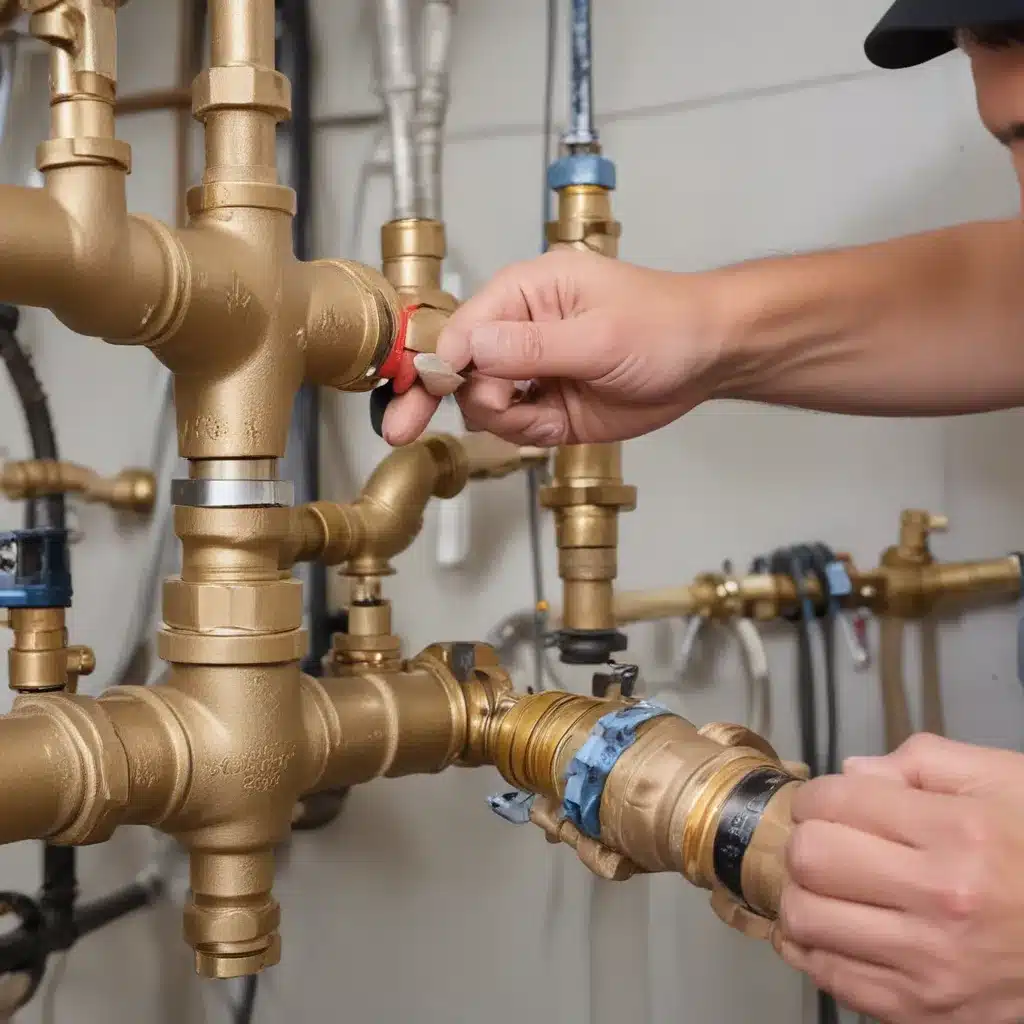
Backflow — the unintended reversal of water flow — poses a critical threat to the safety and integrity of any domestic plumbing system. In our 15 years installing… When contaminated water is drawn back into the clean water supply, the consequences can be severe, ranging from disrupted service to devastating health hazards. As an experienced plumbing consultant, I’ve seen firsthand the importance of proactively diagnosing and resolving backflow issues to safeguard homes and businesses across the UK.
Now, this might seem counterintuitive…
Backflow Fundamentals
At the heart of backflow lies an imbalance of water pressure. Under normal conditions, the public water supply maintains a higher pressure than the internal plumbing network, ensuring a smooth, unidirectional flow. However, when this pressure differential is disrupted, water can be siphoned or pushed back into the clean supply — a phenomenon known as backflow.
This pressure reversal can occur due to a variety of factors, such as a malfunctioning pump, a clogged drain, or even a simple hose connection. The result is the potential for contamination, as polluted water from sources like irrigation systems, chemical storage tanks, or industrial processes may be drawn back into the potable water supply.
Siphoning effects pose another common backflow risk. If a plumbing fixture is left below the water level in a container (e.g., a sink filled with dirty water), the pressure differential can create a siphoning action, pulling the contaminated water back through the fixture and into the clean supply. Implementing effective backflow prevention strategies is crucial to mitigating these hazards.
Backflow Hazards
The dangers of backflow extend far beyond mere inconvenience. Contaminated water can expose building occupants to a wide range of waterborne illnesses, from gastrointestinal issues to more severe conditions like hepatitis, cholera, and legionnaires’ disease. The health implications of backflow can be severe, making it a critical concern for both residential and commercial properties.
Beyond the public health risks, backflow can also lead to significant property damage and legal liabilities. Backflow can saturate structures, erode pipework, and compromise the integrity of entire plumbing systems. In the UK, strict regulatory requirements govern the prevention and management of backflow, with hefty fines and sanctions for non-compliance.
Backflow Diagnosis
Identifying the root causes of backflow is the first step in resolving these issues. As a plumbing consultant, I begin by conducting a comprehensive inspection of the plumbing system, leveraging a range of diagnostic techniques to pinpoint the source of the problem.
Visual assessments often reveal the tell-tale signs of backflow, such as discolored water, unusual odors, or the presence of contaminants in fixtures. Pressure testing can also be a valuable tool, allowing me to detect fluctuations in the water supply that may indicate a backflow event. By measuring flow rates and pressure differentials at strategic points throughout the system, I can isolate the specific areas where backflow is occurring.
In more complex cases, advanced detection methods, such as the use of chemical tracers or smoke testing, can help identify elusive cross-connections or faulty valves that are allowing the unintended reversal of water flow. These techniques not only locate the source of the problem but also provide critical insights into the scale and nature of the backflow issue.
Resolving Backflow Issues
Once the backflow source has been identified, the next step is to implement effective countermeasures. The installation of backflow prevention devices is a common and highly effective solution, creating a physical barrier to stop contaminated water from re-entering the clean supply.
Reduced Pressure Zone (RPZ) assemblies, atmospheric vacuum breakers, and double check valves are some of the most widely used backflow prevention devices in the UK. These specialized fixtures are designed to maintain a carefully controlled pressure differential, ensuring that water can only flow in the intended direction.
In some cases, more extensive system modifications may be necessary to resolve persistent backflow problems. This could involve resizing pipes, optimizing the drainage layout, or replacing faulty valves and fittings. By addressing the root causes of the backflow issue, these interventions can restore the integrity of the plumbing network and bring it into full compliance with local regulations.
Maintenance and Monitoring
Proactive maintenance and ongoing monitoring are essential for maintaining the long-term effectiveness of any backflow prevention strategy. Regular inspections, conducted by qualified professionals, can identify potential issues before they escalate, allowing for timely remediation.
These routine checkups should include a thorough examination of backflow prevention devices, ensuring that they are functioning as intended and have not become compromised over time. Servicing valves, cleaning pipes, and testing backflow preventers are all critical components of a comprehensive maintenance regimen.
In the event of an emergency backflow incident, having a well-rehearsed response plan in place can make all the difference. Shutdown procedures, contamination mitigation strategies, and reliable repair processes are essential for minimizing the impact and restoring normal operations as quickly as possible.
Conclusion
Safeguarding domestic plumbing networks against the perils of backflow is a multi-faceted challenge that requires a deep understanding of the underlying mechanics, as well as a keen eye for detail and a commitment to proactive maintenance. By leveraging advanced diagnostic techniques, implementing robust backflow prevention solutions, and adhering to rigorous maintenance protocols, plumbing professionals can help homeowners, facility managers, and commercial clients across the UK mitigate the risks and double-check that the long-term integrity of their plumbing systems.
To learn more about our comprehensive backflow management services, please visit Plumbing Drains North Wales.

